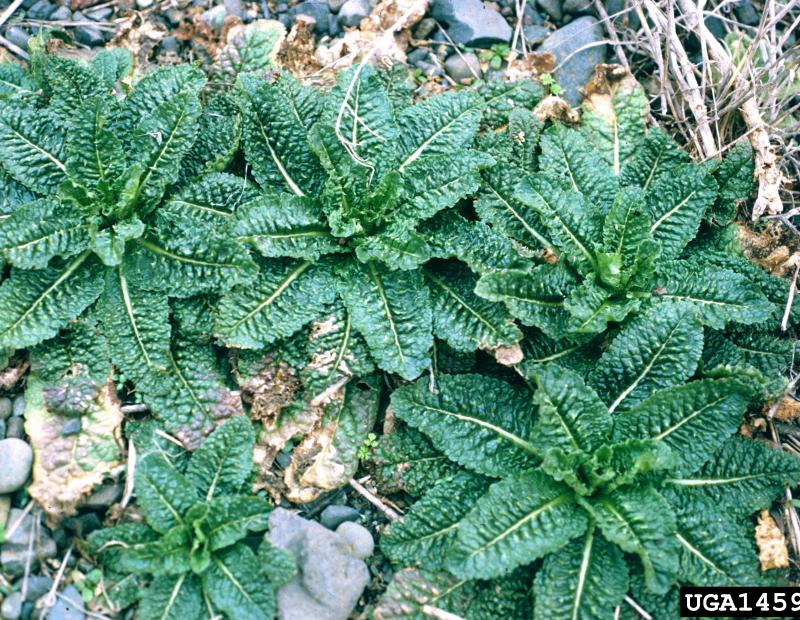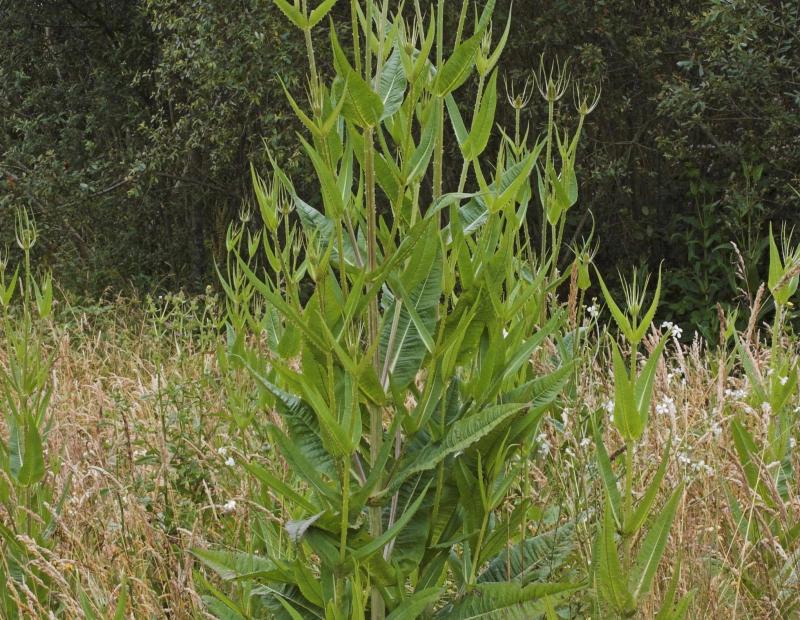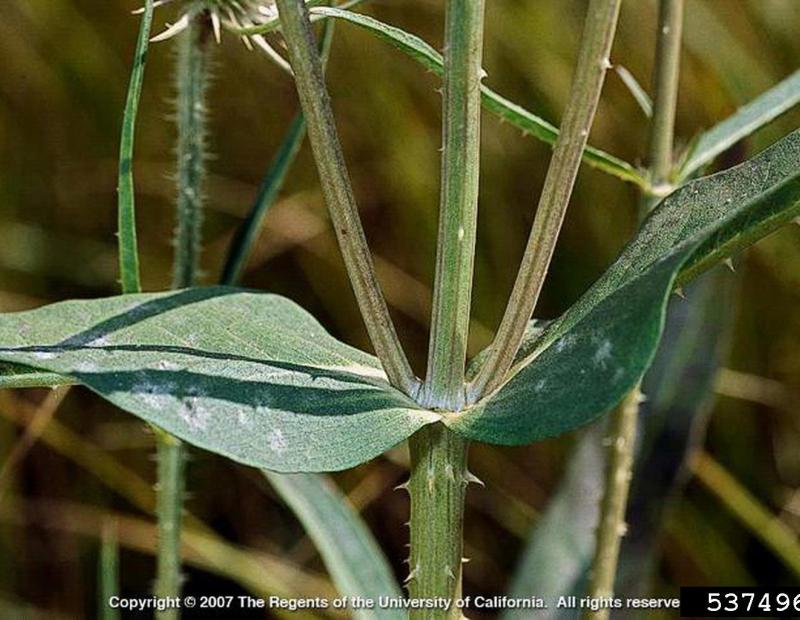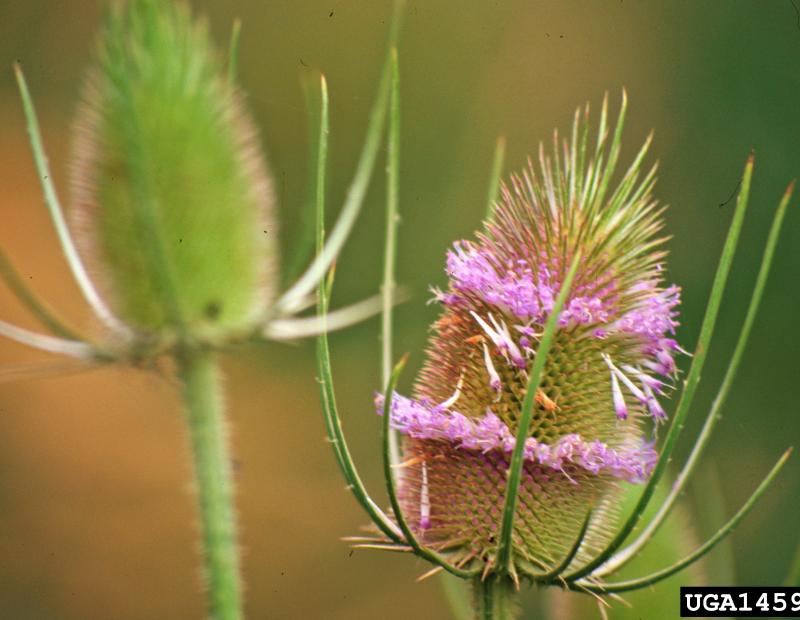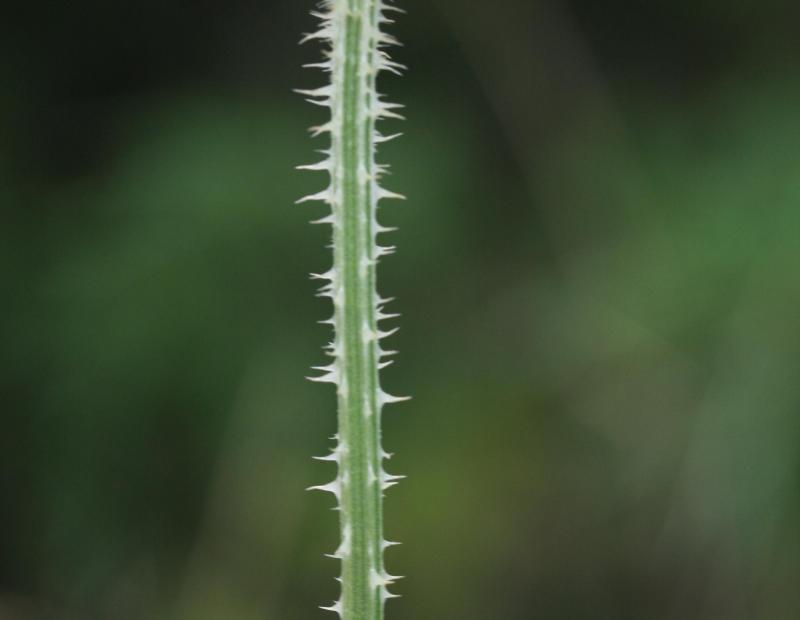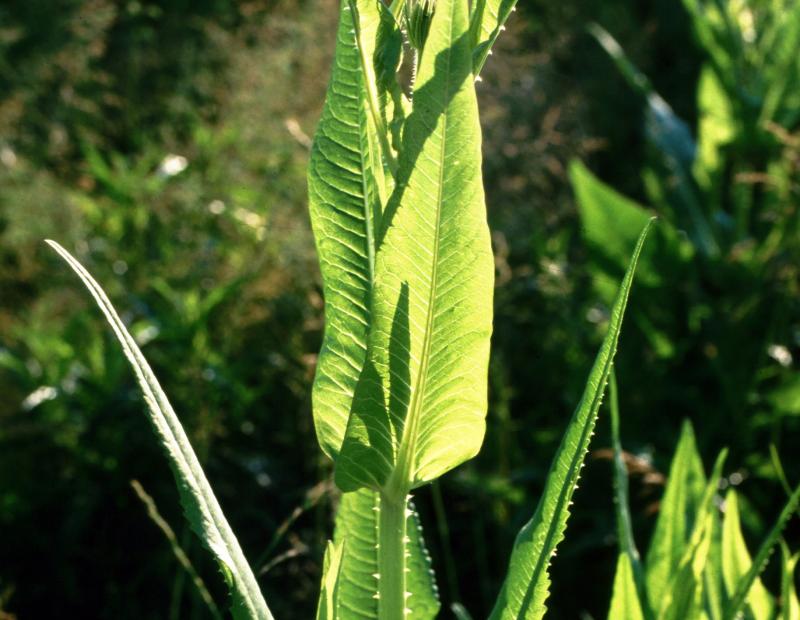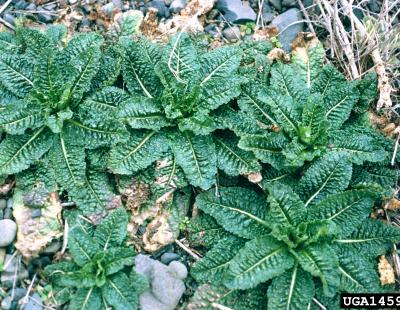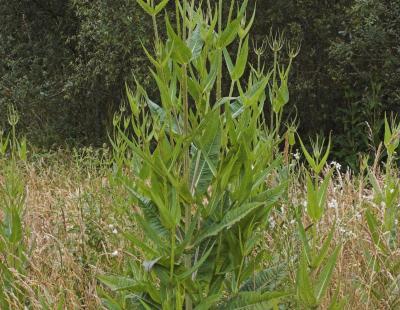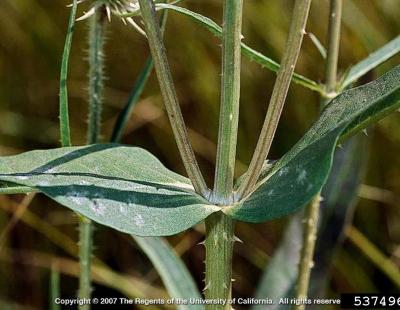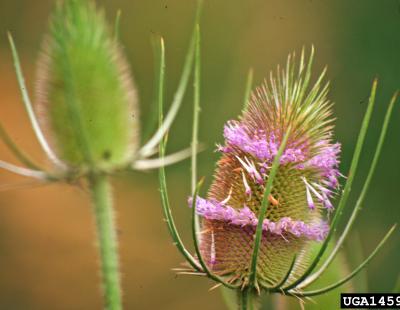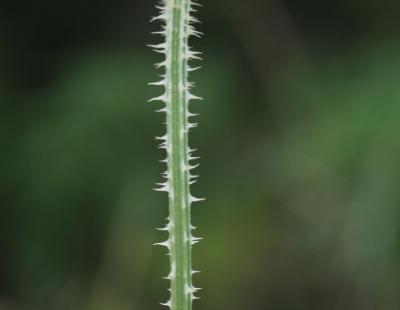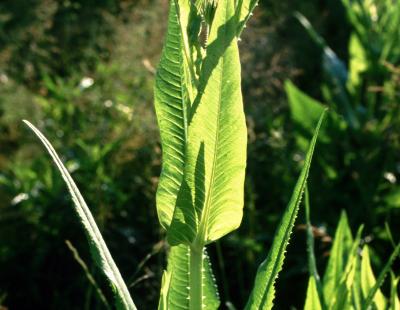Vertical Tabs
- Fuller’s teasel is a member of the Honeysuckle family (Caprifoliaceae)
- Native to Europe, temperate Asia and North Africa, Fuller’s teasel is a robust, prickly rosette-forming perennial common in agricultural fields and waste places. Given the right conditions, stems can reach over seven feet in height. The species is most recognizable when spiny, conical, purple flowers bloom usually in late summer. (6)
Leaves
Leaves are entire, lance-shaped, and have toothed or wavy margins. The leaves form a ‘cup’ where they meet the stem which collects water and can be up to five inches deep.
Flowers
Flowers occur in terminal, egg-shaped inflorescences up to four inches long and are subtended by long, linear-shaped bracts. Up to 1,500 small purple to pinkish-purple flowers emerge around the middle of the inflorescence, usually in August, and gradually progress up and down the length of the inflorescence. (6)
An aggressive, taproot forming biennial or short-lived perennial, Fuller’s teasel is capable of forming dense, homogenous stands, diminishing native plant biodiversity and changing community composition.
Biological Control
There are currently no biological control agents in use against this species.
Manual or Mechanical Control
Pulling / Digging Up: Consistent pulling by hand is effective against Fuller’s teasel, so long as most of the species’ extensive taproot is removed or severed well below ground. This is a very time and labor-intensive effort and useful only for very small populations. (2)
Mowing: Although consistent mowing just prior to flowering does diminish seed set, it must be performed several times a year to achieve positive results as the species will re-sprout from its taproot. (2)
Girdling: Not applicable
Prescribed Fire: Fire promotes the establishment of the Fuller’s teasel by eradicating competition from other plants. Due to its long taproot, the species is largely resistant to fire. (3)
Prescribed Grazing: Not advisable. This species is rejected by most grazers due in part to abundant spines. In fact, grazing is strongly associated with the presence of Fuller’s teasel, perhaps due to the decreased competition from other plants and perpetual disturbance grazing causes. (4)
Soil Tilling: Tilling is an effective management strategy against mature plants but will stimulate germination and may not be an appropriate strategy outside of agricultural areas. (3)
Mulching: Mulching with black plastic may be effective at controlling small areas of seedlings of Fuller’s teasel. (6)
Solarization: Not applicable
Hot Foam Spray: Not applicable
Chemical Control
The pesticide application rates and usage herein are recommendations based on research and interviews with land managers. When considering the use of pesticides, it is your responsibility to fully understand the laws, regulations and best practices required to apply pesticides in a responsible manner. At times, the pest you seek to treat may not be on a pesticide label, requiring a 2ee exemption from NYSDEC. Always thoroughly read the label of any pesticide and consult the NYSDEC or a licensed pesticide applicator with questions.
Foliar Spray: A variety of herbicides, including 2-4D, Aminopyralid, Dicamba, picloram, Clopyralid, Triclopyr and glyphosate are all effective against Fuller’s teasel when applied during active growth. The species is particularly vulnerable at rosette stage. Glyphosate is not selective so take care when applying in natural communities. Repeat applications of all herbicides will likely be necessary. Always read and follow all directions on the label and to mix appropriate concentrations of each herbicide. Follow up treatment will be necessary the following season to manage seedlings and new growth emerging from taproots. (2, 3)
Cut Stump: Not applicable
Basal Bark: Not applicable
Hack-And-Squirt
Stem Injection: Not applicable
Pre-Emergent Spray: Not applicable
General management overview and recommendation
An integrated approach of combined mechanical strategies and sequential herbicide treatments will provide the highest rate of control of Fuller’s teasel. Two herbicide applications may be necessary during the first year of control, and all managed sites will need to be revisited the following season— for retreatment of mature plants and to target newly emerged seedlings via pulling or herbicides. (3)
Post treatment monitoring
Depending on the management method employed, controlled populations should be revisited throughout the growing season for repeat management activities approximately 2-3 weeks post treatment. Due to the species relatively long-lived seed bank, all managed sites should be visited for at least six years to ensure exhaustion of the seedbank and to prevent reinvasion. (4)
Disposal Methods
Waste material can be composted, burned, dried or disposed of in a landfill. All viable seed must be bagged and disposed of. (5)
REFERENCES
- http://eol.org/pages/467215/details
- https://plantsciences.missouri.edu/deltaweeds/pdf/mdc/Teasel.pdf
- https://wric.ucdavis.edu/information/natural%20areas/wr_D/Dipsacus_fullo...
- https://www.fs.fed.us/database/feis/plants/forb/dipspp/all.html
- http://www.mda.state.mn.us/plants/pestmanagement/weedcontrol/noxiouslist...
- https://www.cabi.org/isc/datasheet/119605
- https://www.jstor.org/stable/1936219?seq=1#page_scan_tab_contents
- https://www.jstor.org/stable/2404042?seq=1#page_scan_tab_contents

